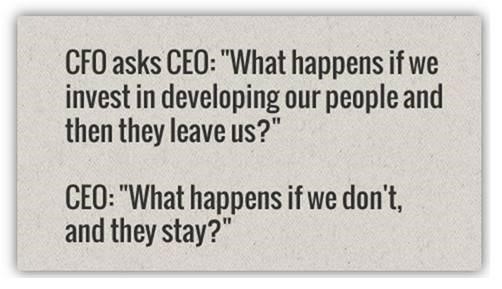Training and Development of my Staff – Are my Programs effective?
Training and development of staff is arguably an important part of the development of your company and ensuring that your company grows. Onboarding a new employee is costly and similarly, every company wants to ensure that their employees are not only effective but also efficient. Training and development programs provide employees with that necessary skills and knowledge to grow and also implement in their current work to be more efficient and effective. As an organization, it is therefore critical to examine training and development programs and ensure that they are effective.
Here are 5 tips to ensure that you have a successful training program
- Identify Clear Goals and Outcomes
Any good program starts with clear and definable goals. Training merely for the purpose of having it is futile. You need concrete outcomes in order to stand any chance of deploying materials and a curriculum that add value to your firm.
- Develop Engaging Training Resources
In addition to having the correct goals and the best intentions, you also need materials and a curriculum that is sufficiently interesting to engage your employees and keep them focused. It comes down to three choices:
- Establish a Consistent Schedule
Effective training is all about consistency. Instead of trying to cram all of your company’s required training into a three-day period at the end of the calendar year, try spreading things out and commit to a couple hours of training every week or month.
This kind of consistency not only lessens the burden on your company, but it also raises the probability that your employees will become committed to ongoing learning. (They’ll also retain more information this way.)
- Give Employees a Say in the Curriculum
Though you’ll have the final say over which curriculum your organization uses for its training programs, don’t deny your employees the opportunity to get involved. Ask them about concepts and topics they feel would help them grow as employees, leaders, etc. There’s a lot of potential value in getting their input, and you may stumble across some ideas you hadn’t previously considered.
- Bridge the Gap Between Knowledge and Action
One of the biggest mistakes organizations too often make is failing to bridge the gap between knowledge and action. In other words, they expend generous amounts of time and money on training but don’t give employees a timely opportunity to transfer the knowledge they’ve acquired into action.
Employee training expert Julie Winkle Giulioni believes in developing an action plan: “Organizations, leaders, and individuals invest heavily in training and development through traditional classroom-based workshops, e-learning, webinars, apps, mentoring, experiences, and more,” Giulioni explains.
“But formal and informal learning efforts fall short of the full range of possible outcomes if we don’t metaphorically cross the finish line by bringing the learning to life. Action planning is what does this, bridging insights and intentions to results.”
You can increase the odds that your employees will convert knowledge into action by setting them up for success. Always enable employees to debrief before they leave any training session.
Ask questions like “What will you do differently now that you know X?” Host follow-up meetings with your team to see what progress they’re making. Simple things like these can have a significant impact.
For more info
One comment
Comments are closed.



May 12, 2018
I definfately agree….well said